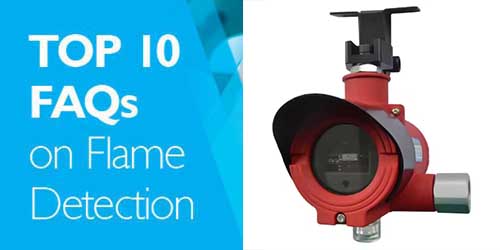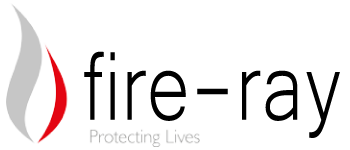
Top 10 most asked questions on Flame Detectors
Welcome to this months blog, I will be answering the top 10 most asked questions about our Talentum Flame Detectors.
1.What type of flames can your Talentum detect?
Our Talentum detectors look for flames across a broad spectrum of infrared and UV light (both invisible to the naked eye). They also detect the flickering movement of a flame allowing our products to detect most flames, that are both non-hydrocarbon or hydrocarbon based.
2.How do you align a flame detector?
Talentum flame detectors do not need to be aligned, simply face the unit towards the risk/area being protected. So as long as your risk is in that 90° field-of-view, any flame will be detected and put the unit in to alarm.
3.How do I know my flame detector is working?
We offer a Flame Tester Unit that works with our entire range of flame detectors. It is advised that when testing your flame detector you test with the same signal strength and range every time to gauge the effectiveness and functionality more accurately.
4.How often should I test my flame detector?
We recommend you test your flame detectors at least every 12 months – this can vary depending on site requirements, local laws and regulations and it is your responsibility to know these.
My rule of thumb: If in doubt. Test it. Record it.
We have an easy to follow 1 page Talentum maintenance guide that can be found here which you can download to any device and/or print out.
5.Can the Talentum Flame Detector Test Unit work with other types of detectors?
Our Flame detector test unit is designed to test our Talentum flame detectors, so we cannot guarantee cross compatibility or reliability with other types of flame detectors.
6.What do I do if my detector’s power LED is not ‘ON’?
Power the unit at ground level and check for a GREEN LED again. It may be that the LED has moved from its position. Check your wiring is connected to power supply and voltage is 24Vdc. If the amber LED illuminates then the unit is likely faulty.
7.My Fire Panel is saying the flame detector is in FIRE, but the detector is not showing a fire – What should I do?
Check the wiring against the drawing within the manual
1. Internal Sensor Test (optional)
If testing with our Talentum Flame Detector Tester is not possible, use this wiring method to test your flame detector unit in the field.
Used when:
Environments is hazardous
Accessibility is restricted
Area is contaminated
2. Fire Resistor
Specified by fire panel manufacturer.
3. End of Line Resistor
Specified by fire panel manufacturer.
It may be that the fire and fault relay are wired incorrectly and simply need to be corrected. Also check the resistor values are correct with the fire panel manufacturer.
8.Can my flame detector work from behind glass or screen?
Yes, all models will work except for our UV/IR2 Flame detector models, as UV light emitted from a flame can absorbed by glass.
9.Will flame detectors work in waste disposal sites?
In short. Yes. Our IR2 and IR3 flame detectors provide fast detection response while operating through dust and mist without loss of performance or reliability.
Click here to watch a video of a waste processing plant that has installed IR3 flame detectors.
10.How many flame detectors do I need for my application?
This question could easily be a blog of its own, but I will try and keep it concise.
Know your Risk. Does your environment contain volatile substances or are you monitoring a metal process to check for ignition? Depending on your environment and its risks you will need different set-ups in order to make sure it is fully protected.
Know your Model. Check out our flowchart of what flame detector do I need? This breaks down our entire range and what environments they protect.
Know your Flame. What size flame are you trying to pick up, small flames need detectors approximately 1meter away from the risk, while larger flames can be detected up to 25m.
Know your Measurements. Make sure you are aware of the size of the process or area you are looking to protect as will affect the number of units needed for your installation.
Know your Obstructions. If you cannot see the flame, the detector cannot see it either. In any installation there are common obstructions to be aware of; people, vehicles, equipment (stationary and moving) or internal building structures. Add additional flame detectors where temporary or permanent obstructions may occur and always test final installation in different locations to check your coverage is as intend.
Customer Support Engineer
